1. the study of the chemical substances and vital processes occurring in living organisms (biological chemistry)
1.1. everything is a chemical and made of atoms.
1.2. molecules are held together by bonds.
1.3. bonds are created and broken in chemical reactions.
1.4. the four basic elements humans are mostly made of are carbon, oxygen, hydrogen and nitrogen. among other trace elements like iron.
2. organic compounds
2.1. compounds that contain carbon. these are the second most abundant type of compounds in cells, other than water.
3. carbon chemistry
3.1. carbon can form up to 4 covalent bonds to attach to other carbon atoms which created long and complex chains of carbon.
3.2. hydrocarbons are the simplest of organic compounds because they only contain hydrogen and carbon. (i.e propane, asphalt, gasoline, methane, butane)
4. biomolecules (macromolecules)
4.1. carbohydrates
4.1.1. used as an energy source, energy storage, raw materials, structure and information and are generally hydrophilic.
4.1.2. monosaccharides - single subunits (monomers)
4.1.2.1. simple sugars used as cellular fuel.
4.1.2.2. can be linear or form a ring structure
4.1.2.3. i.e glucose (dextrose), fructose, deoxyribose, ribose, galactose
4.1.3. disaccharides - two subunits
4.1.3.1. two monosaccharides covalently linked (dehydration synthesisreaction)
4.1.3.2. i.e sucrose, lactose,maltose
4.1.4. oligosaccharides - 3-9 units
4.1.5. polysaccharides - many subunits (10 or more)
4.1.5.1. made of long chains of monosaccharides, can be long straight chains or can be branched
4.1.5.2. properties depend on monomers, linkage, and structure
4.1.5.3. i.e pectin,chitin, cellulose, glycogen when branched is soluble, the starch (amylose) is insoluble when straight, the starch (amylopectin) is soluble when branched
4.2. proteins
4.2.1. polymers made up of amino acid monomers
4.2.2. perform the basic functions of life
4.2.2.1. structural proteins (provide support), storage proteins (provide amino acids for growth), contractile proteins (help movement), transport proteins (help transport substances), enzymes (help chemical reactions)
4.2.2.2. structural proteins (provide support), storage proteins (provide amino acids for growth), contractile proteins (help movement), transport proteins (help transport substances), enzymes (help chemical reactions)
4.2.3. proteins differ by their sequence and shape
4.2.3.1. primary (1) - the actual sequence of amino acids
4.2.3.2. seocndary (2)- basic shapes (helix, sheets) hydrogen bonds
4.2.3.3. tertiary (3) - how the helices and sheets fit together. all bonds
4.2.3.4. quaternary (4) - how multiple peptides combine to form a larger protein. two or more peptides interacting
4.2.3.5. if a proteins 2nd, 3rd, or 4th structure are wrong, the protein will not be able to function correctly
4.2.3.6. denaturation is the change to the 3D structure of a protein, changes in temperature, pH, salt concentration, or water concentration.
4.2.3.6.1. proteins can be either very sensitive or very resistant to denaturation
4.2.3.6.2. can be reversible if the changes are minor, or the protein may be permanently damaged and may not work properly
4.3. lipids
4.3.1. hydrophobic biological molecules
4.3.2. composed of mainly C and H (hydrocarbons) with little O
4.3.3. main classes are fats, steroids, waxes, and fat soluble vitamins
4.3.3.1. fats are composed of fatty acid chains
4.3.3.2. main function is energy storage, cushioning, and insulation
4.3.3.3. energy is stored in the C-H bonds
4.3.3.4. fatty acid chains can be alone or linked
4.3.3.4.1. glycerol is a linker molecule and can link up to 3 fatty acids through dehydration reactions
4.3.3.5. saturated vs unsaturated fats
4.3.3.5.1. saturated fats have no double bonds between the carbon chain
4.3.3.5.2. unsaturated fats have one or more double bonds in the carbon chain
4.3.3.6. steroids
4.3.3.6.1. majoring signal molecules
4.3.3.6.2. very different structure from fats
4.3.3.6.3. basic 4 ring structure with different "decorations"
4.3.3.6.4. in humans it is used for sex determination and immune function, as well as anabolic steroids by athletes
4.4. nucleic acids
4.4.1. these are hydrophilic
4.4.2. these are monomers, they are linked together to form two types of nucleic acids: DNA and RNA
4.4.3. composed of monomers called nucleotides, which have 3 parts covalently linked together: Phosphate, Sugar, Base
4.4.4. used for energy (ATP) and to store information (DNA,RNA)
4.4.4.1. store information in the form or dna and rna. DNA is more stable, RNA is less stable
4.4.5. sugars: DNA which has Adenine, Cytosine, Guanine, and Thymine. RNA has Adenine, Cytosine, Guanine, and Uracil
5. polymers
5.1. all organic biological compounds are made of monomers that combine to form large polymers
5.2. polymers are compounds that are made by covalently linking monomers together
5.3. polymerization is made by dehydration synthesis (water is removed to link the subunits)
5.4. the breaking of a polymer into monomers is called decomposition(hydrolysis)
6. amino acids
6.1. all proteins are made up of amino acids, there are 20 common amino acids.
6.2. all amino acids have a common structure
6.2.1. amino group (N), carboxyl group (C), central carbon containing the side group
